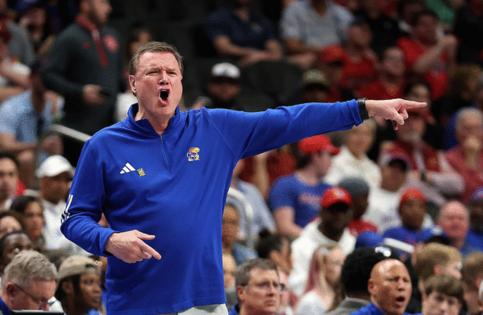Cardiologist explains use of stents. Kansas coach Bill Self has had two such procedures.
Published in Basketball
KANSAS CITY, Mo. — As the division chief of cardiovascular medicine for the University of Kansas Health System, Dr. Mark Wiley is no stranger to stent procedures.
This week, Dr. Wiley spoke with The Kansas City Star to explain the science behind such medical procedures. They have become particularly relevant in the Kansas Jayhawks world after procedures undergone by men’s basketball coach Bill Self in recent years — including this past weekend.
The longtime Kansas coach, 62, was admitted to Lawrence Memorial Hospital last Thursday after experiencing what a program news release described as “some concerning symptoms.” While at the facility, Self had two stents inserted during a procedure around his heart.
Self was then released from the hospital Saturday after a short stay.
Wiley is not Self’s doctor, and the physician was careful to note that he couldn’t and wouldn’t get into specifics regarding Self’s case because of federal HIPAA laws governing health and privacy.
But the cardiology specialist was willing and able to provide some general medical insight about the type of issues Self has apparently experienced, how such concerns can be dealt with and the basics about stents.
So what is a stent?
Wiley described a stent as basically being a “metal tube that’s used to scaffold arteries open.” Essentially, stents are used to treat cardiac blockages and improve blood flow.
This past weekend was not the first time that Self has had stents inserted. He missed KU’s postseason run in 2023 because he was hospitalized that March 8 after experiencing tightness in his chest. During that time, he had two stents put in.
Upon hearing he had more inserted this month, fans might be alarmed. Wiley downplayed such concerns, saying it’s very common for people to have multiple stents set in place over a relatively short period of time — typically with positive outcomes.
“Sometimes it’s not an unexpected thing,” Wiley said. “If somebody was to have blockages in their heart, we try to treat the blockages to improve blood flow when you need to, and then you try to make sure you manage cholesterol and things like that.
“People over a short period of time may end up receiving more than one stent. It’s just a way to kind of get blood flow optimized.”
Stents and college basketball
According to Wiley, working a high-pressure job — such as being a high-level college basketball coach — doesn’t necessarily put someone at a higher risk of needing a stent.
“I wouldn’t say that’s the case,” he said when asked generally whether such high-pressure jobs put people at risk. “Or else every cardiologist would probably end up having stents.
“We work a good 60, 70, 80 hours and it’s a high-pressure deal. You get a coach who is in a high-pressure situation, they learn how to manage that. It’s not necessarily going to be a trigger for events like this.”
As for his own advice about dealing with stress? Wiley said he would focus on diet and lifestyle modification while also trying to identify and and then control potential underlying causes — such as cholesterol and blood pressure.
Wiley also noted that the insertion of stents should not negatively affect one’s lifestyle or job long-term.
“I would say you get blood flow reestablished,” he explained, “you manage risk factors and you really should be able to maintain the same lifestyle as you’ve had, as far as activity levels.”
Wiley said Jayhawks fans should know a person getting stents inserted is not atypical — nor should it be cause for worry.
“Stents are probably something we do every day in a hospital,” he said. “Any given day, we probably have 4-5 patients that are needing stents. It’s become a very routine, safe procedure, putting in stents.”
©2025 The Kansas City Star. Visit kansascity.com. Distributed by Tribune Content Agency, LLC.







Comments